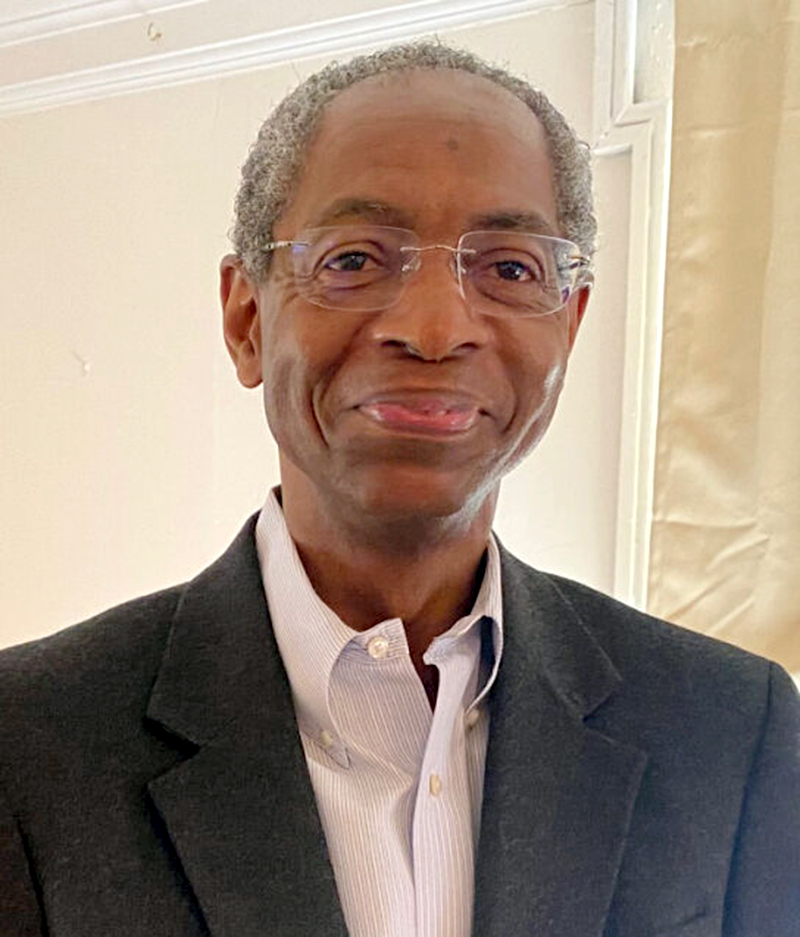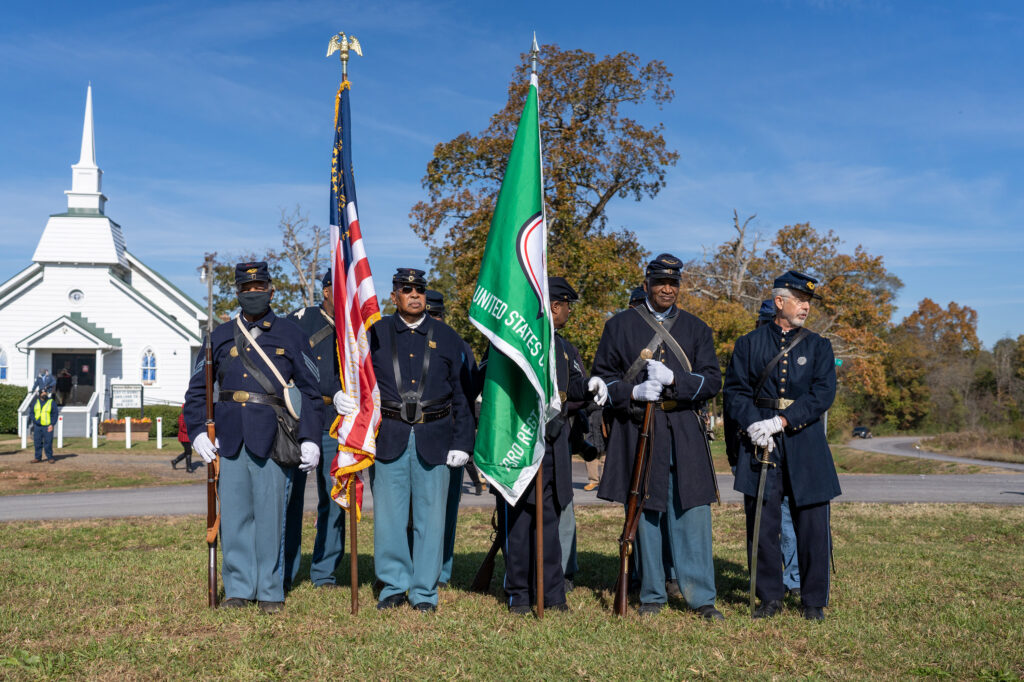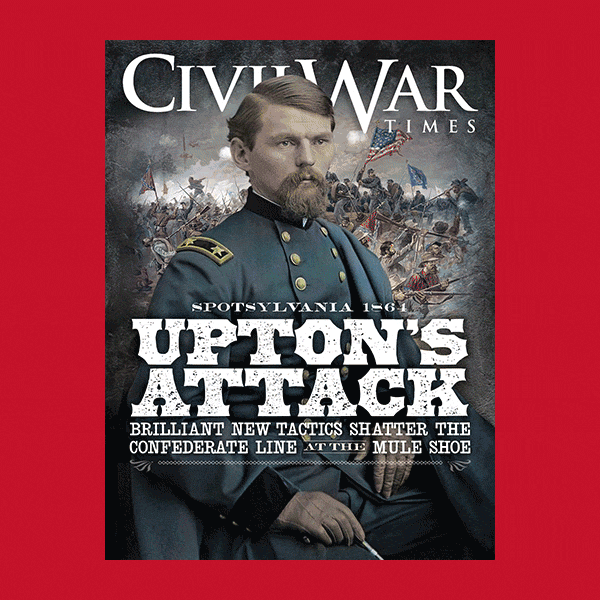Howard Lambert was maybe 10 or 11 when, while riding his bike near his home in Culpeper, Va., he happened upon a group of Civil War cavalry reenactors engaged in a mock battle in the middle of a field. Lambert had some knowledge of the war living in Culpeper, a still-segregated community in the heart of central Virginia in the 1960s, but the reality of the moment had an immediate effect on him. The reenactors, dressed in both Confederate and Union uniforms, “had guns and were shooting at each other,” he recalled recently. “The smoke was real.”

It would be a watershed moment for Lambert, who recalls reading books about the nation’s eternal struggle that he had, as a teenager, checked out from a local library, as well as occasional glimpses through a car window of the Chancellorsville and Wilderness battlefields as his family drove toward Fredericksburg. He was likewise captivated by the respective Civil War miniseries “North and South” and “The Blue and the Gray,” and in the late 1980s turned a role as an extra in the Oscar-winning film “Glory” into a reenacting passion of his own.
Now in his late 60s, Lambert’s life continues to revolve around the war. In August 2022, he was named the first African American president of the Brandy Station Foundation, where he is extensively involved in the preservation and remembrance of one of the Civil War’s most important historical sites: Brandy Station—in particular the June 9, 1863, battle there, recognized as the Gettysburg Campaign’s opening clash.
The Civil War, you have said, is in your DNA. Why exactly?
I mean this both figuratively and literally. Born in Culpeper, I was exposed to Civil War history from a very early age. More than 100 battles, skirmishes, and incidents took place on Culpeper soil during the war. During my family’s travels, we would frequently pass by Civil War battlefields, including the Wilderness, Chancellorsville, Spotsylvania, and Brandy Station. I always found them of great interest and was drawn to everything Civil War—“The Blue and the Gray” and “North and South,” for example, and whatever books that I could get to read.
But I also have a connection to a Civil War soldier. The brother of my great-great-grandfather, Lewis Turner, served. His name was Fielding Turner. He was born in Culpeper and served in the 20th New York [Infantry]. He returned there after the war.
You were the co-founder of the African American Heritage Alliance and founder of the Freedom Foundation, and now as president of the Brandy Station Foundation you have an incredible opportunity to help preserve the legacy of one of the war’s most important sites. Are you at all in awe of this responsibility?
Not at all. I believe that my many years of experience, both personally and professionally, has prepared me for this moment in time. I embrace each day and never lose sight of the fact that I do this for all men who served during the Civil War. I reflect on them each and every day. As is often said, “All gave some; same gave all.”
What is in the works for Brandy Station’s 160th anniversary in June?
The Foundation has a number of events planned. We are working with Culpeper Battlefield Tours to put on tours, reenactments, living history events, and guest speakers, including acclaimed author Gary W. Gallagher.
What other significant changes are taking place at the site?
My number one priority is the Graffiti House, which dates back to 1858. Both Union and Confederate soldiers stayed there and wrote on the walls. It is a real treasure of historic significance. We have plans to do repairs to the exterior and improve our visitor experience during tours of the interior. In addition, we are making improvements to the grounds.
As you say, the Graffiti House is such an important symbol of the history made at Brandy Station, yet the danger it might be lost to development and time without intervention remains a threat. What can the Foundation do to make sure that will never happen?
In the short term, we have plans to make improvements to the exterior and also make the tours more dynamic for our visitors through the use of electronic means. Of course, we also have to be aware of what’s happening in the community and the possible impact of that to the Graffiti House. It is important that our voice be heard and engaged in any situation which might potentially impact the Graffiti House and the surrounding area.
We have fostered a great relationship with our neighbors and elected officials and look forward to working with them on any future issues and concerns. In addition, as part of the Culpeper Battlefields State Park, we continue to look forward to working with the Commonwealth of Virginia on the best ways to maintain the Graffiti House and to enhance the overall experience our visitors receive. We are always looking for volunteers to help us in our mission. Volunteer help is so critical to our success.
Tell us about your deep friendship with Clark “Bud” Hall, who probably knows more about Brandy Station than anyone and, poignantly, is one of the original triumvirate behind the modern, still-thriving battlefield preservation movement.
I have known Bud for many years and consider him a friend and mentor. As you may know, Bud served in our Armed Forces and is a fellow graduate of American University. He is the first person, to my knowledge, to tell the story of U.S. Colored Troops in Culpeper and as part of the Overland Campaign. I have literally spent hours with Bud traveling to various Civil War sites in Culpeper. He once told me, “It is up to us to tell the story.” Those words served, in part, as my inspiration to form the Freedom Foundation of Virginia.
We first met many years ago at the site of the 1862 Battle of Ox Hill, Virginia, during a gathering to recognize two Union generals killed during the battle, Philip Kearny and Isaac Stevens, and the preservation of what is now a Fairfax County Park. I gave testimony before the Fairfax Board [of Supervisors] to preserve the site and was an early member of a group that today is known as the American Battlefield Trust [formerly the APCWS and the Civil War Trust].
I am still working with Bud on several projects and in bringing greater recognition to the USCTs.
What inspired you to become a reenactor? In your experience, how much has this “pasttime” changed from when you started to now?
It was the movie “Glory.” I had read an article in The Washington Post about the Battle of Antietam. In the article, the reporter interviewed Civil War expert Brian Pohanka. Brian mentioned in the article that he was involved in a project about the 54th Massachusetts and was recruiting African Americans to portray the historic regiment. I called Brian and joined the group and went off in early 1989 to be in the movie. The group of guys was mostly from the Washington, D.C., area and we decided to stay together after the movie. Over the years, we literally have done hundreds of events, including several more movies, living history events, reenactments, etc.
What has changed for me is that I have moved from living history events, reenactments, and such to starting or being part of other organizations, including Friends of the Wilderness Battlefield; the 23rd USCT; the Freedom Foundation of Virginia [as founder and president]; the John Brown Farm advisory board; and the Brandy Station Foundation, as a longtime member before I became president.
While working on “Glory,” could you tell it would have the incredible influence it has had in informing mass audiences of the contributions of Black soldiers to the Civil War?
Frankly, I did not at the time think it would have the lasting influence over the years. I was a communications major in college (radio, television, and film) and looked forward to the opportunity of being in a feature film. I knew that the story of the 54th would be compelling and should be told, but I never thought it would end with five Oscar nominations (it won three) and educate thousands of students on African Americans’ service during the war. Over the years, I have spoken countless times to organizations regarding the role of USCT soldiers during the war.
How much screen time did you manage? Can we find you in a freeze frame at some point?
I took part in three weeks of filming and was part of the James Island (Savannah, Ga.) and Fort Wagner (Jekyll Island) filming. I was in various scenes with the principal actors. If you did a freeze frame for a split second, I can barely be seen when Kevin Jarr says, “Give them hell 54th,” and when Matthew Broderick says before attacking Fort Wagner, “If this man should fall, who will pick up the flag and carry it forward?” It was an ensemble cast. Most of the screen time—rightfully so—was on Matthew, Morgan, Denzel, and the other up-and-coming actors.
I would also like to add, the movie won an Oscar for Best Sound. It was our group that was used for much of what was called the “Wild Track” of soldiers marching and such at the polo field at Jekyll Island. Russell Williams II, a fellow American University graduate, received his first Oscar for Best Sound—he later won another for the 1990 movie “Dances With Wolves.”
The contributions USCT soldiers made to the Wilderness Campaign often get downplayed or overlooked. How are you trying to change that?
I am a member of the 23rd USCT which, as you are aware, saw action in the Wilderness Campaign. Ed Gantt is the president of the 23rd and a member of the Freedom Foundation. The two groups work closely together supporting various events. In fact, for the first time, the 23rd USCT will be doing a living history event at the Graffiti House in early May. More Culpeper-born USCTs served in the 23rd than any other regiment during the Civil War: 12. We try to tell the story of the 23rd at every opportunity. The 23rd has a full calendar of events, and we are pleased to host them at the Graffiti House.

Madden’s Tavern, on May 8, 1864, was a tragic moment in Culpeper’s Civil War History. You led a drive to have a marker placed there—the Maddensville Historic Site—in 2021. Tell us more about that effort.
The project was years in the making. I have known the Madden family for many years. It was after reading the book “Seasons of War” by Dan Sutherland that I learned of the killing of USCTs near Madden’s Tavern. I later went to the Library of Virginia and looked at the actual diary of Byrd Charles Willis, 9th Virginia Cavalry, in which he writes about killing USCTs that May. I felt lead to bring recognition to this incident by putting up a memorial in their honor. I was able to work with the Madden family and later with the current owners [Crystal and George Tingler] to secure the land and create the memorial site. Of course, there were many other individuals who helped make it a reality. A marker to honor these individuals is scheduled to be in place by this Memorial Day.






